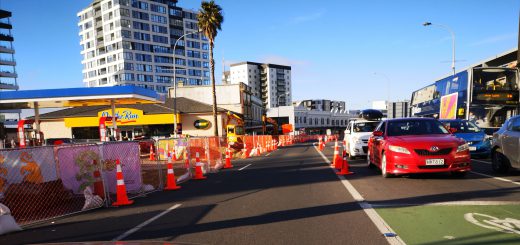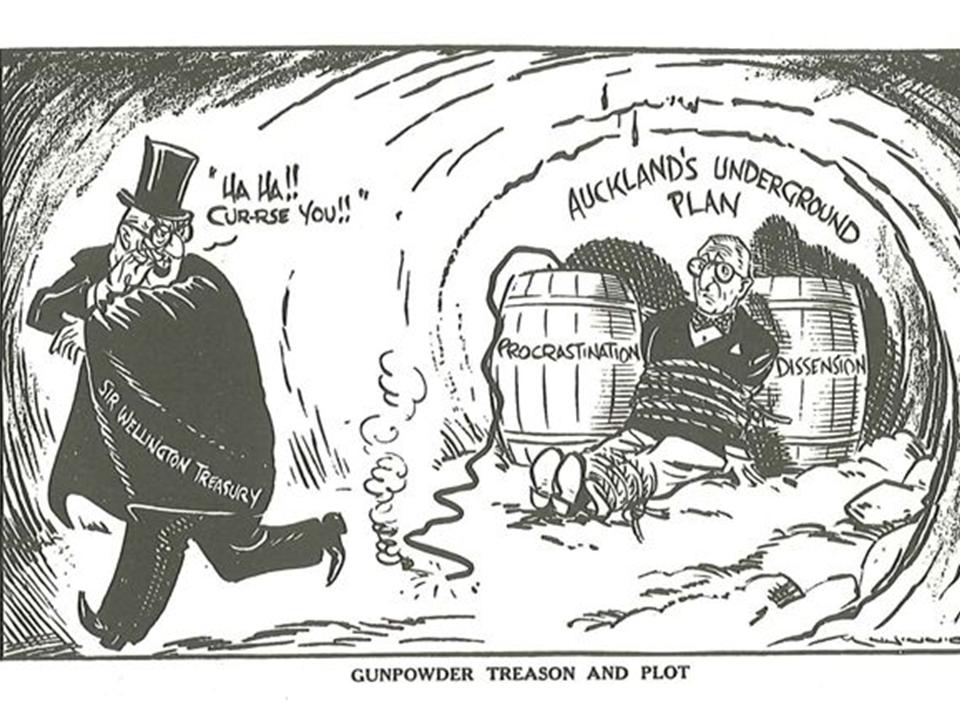Waitemata Harbour, Port and waterfront – Auckland Council leadership in over its head
Despite the mayor and council chief executive’s belated warnings, the Ports of Auckland appears to be pushing ahead with the $22m first stage of extending the Bledisloe container terminal nearly 100 metres out into the harbour. Thumbing its nose at its legal shareholder and the people of Auckland.
The public interest group Urban Auckland is taking the port company to court (all power to them) but the case won’t be heard for weeks. Meanwhile an unprecedented collision appears inevitable.
What has become clear over the last year is that the Auckland Council leadership, both elected and appointed, is out of its depth when it comes to dealing with Auckland’s port, harbour and waterfront. In the case of the Ports of Auckland reclamation, the council has lurched erratically from ‘nod-nod, wink–wink’ to talking about a ‘thermo-nuclear’ response. In fact Auckland Council has been guilty of sending mixed messages to the port company – conniving in issuing resource consents and keeping those consents secret for weeks, despite the obvious public interest – until their existence was leaked to the media by a ‘waterfront source’. The port company is obviously assuming the council’s tough talk is just for public consumption. In some ways there is a sense of inevitability about this latest crisis. The council leadership has been almost desperate to be ‘business-friendly’ and this attitude is reflected down the chain of command. This is especially noticeable when it comes to the issuing of resource consents, of which only around 1% are publicly-notified in Auckland. As we have seen, it is this more than anything else that is really generating public anger at the council. While this has been going on all over the Auckland region, it largely passes unnoticed (the exception being the council’s non-notified consent to cut down a mature kauri in an area ostensibly protected by the Waitakere Ranges Heritage Area Act). But anything related to the harbour or waterfront is a deeply sensitive matter to Aucklanders.
The latest example of this is the Barfoot & Thompson $1.5m ‘state house’ sculpture, to be subsidised by ratepayers up to half a million, and intended to be plonked on a prime spot at the end of Queens Wharf. While this creation is deemed to be ‘public art’, the council and its ‘public arts’ officers are responding to public concerns exactly like the Ports of Auckland – by ignoring them. They too are pushing ahead in the face of public opposition.
Instead of listening, again like the Ports of Auckland, the council is engaging in a spin campaign, changing the name of the proposed artwork from a ‘state house’ (a somewhat counter-intuitive reference to its sponsor, the real estate corporate Barfoot & Thompson) to a ‘lighthouse’. Presumably this is an attempt to give the artwork some sort of maritime context. Ok that’s not a crime in itself, but what I find objectionable is to have council officers assert in a public meeting that the artwork never was a ‘state house’. There was some irony here, as just before that particular meeting, one councillor colleague, a supporter of the ‘state house’, circulated a gushy piece from Metro that praised the yet-to-be artwork in fulsome terms. Sample: “First, let’s get the definition right. This isn’t a state house. It’s a sculpture, based on the form of a state house. Parekowhai’s work won’t provide anyone with shelter, but it will have profound metaphorical force, as a reminder of a time when we managed to marry massive national wealth to progressive social values.” And so on.
But the sketches of the proposed sculpture never looked like a ‘state house’ and even less so a ‘light house’. Moreover lighthouses are not located inside ports, or on wharves but on exposed capes and islands as a warning and signpost to ships at sea. But my concern here is not to bag the artwork or the artist, or indeed his admirers. It’s not about that.
As the elected representative of Waitemata and Gulf and the former ARC chairman who led the acquisition of Queens Wharf to open it up for the public, my concern is to see that the public’s concerns and aspirations for the waterfront and the harbour are respected. Given the council has chosen so far to ignore the public opposition to the ‘state house/lighthouse’, it should at least ensure that the resource consent for the erection of this edifice on Queens Wharf is publicly notified – as indeed it should be under the Regional Plan (Coastal). This would provide the opportunity for the public to have its say on whether it should go there, or somewhere else. But instead Auckland Council and Waterfront Auckland (the CCO allotted the task of delivering the artwork) are once again seeking to cut the public out of the legal process. No wonder there is rising anger at the arrogance of Auckland Council and its unlovely ‘family’ of CCOs. This is not how a democratic society is meant to work. Auckland deserves better than this.
This article was published in the May issue of Ponsonby News.
A few days after the magazine went to print, the Council agreed to public notify the resource consent for the statehouse/lighthouse art work. One week later led by the mayor, deputy-mayor and chief executive the council backed down from its tough talk with the Ports of Auckland by accepting a so-called ‘compromise’ of a one wharf extension. This was achieved by use of the mayor’s casting vote.



